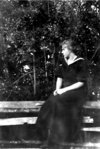While it may be common knowledge that thousands of men were stationed at Fort Worden during the two world wars, the contributions of women are less well known.
The Leader archives reveal that …
This item is available in full to subscribers.
We have recently launched a new and improved website. To continue reading, you will need to either log into your subscriber account, or purchase a new subscription.
If you had an active account on our previous website, then you have an account here. Simply reset your password to regain access to your account.
If you did not have an account on our previous website, but are a current print subscriber, click here to set up your website account.
Otherwise, click here to view your options for subscribing.
* Having trouble? Call our circulation department at 360-385-2900, or email our support.
Please log in to continue |
|


While it may be common knowledge that thousands of men were stationed at Fort Worden during the two world wars, the contributions of women are less well known.
The Leader archives reveal that during the years when the fort was an active Army post (1902-1953), the articles on women at the post usually focused on their social activities, which took place in the houses along Officers Row and NCO (Noncommissioned Officers) Row. The hosting of parlor games, teas and social club meetings made up the bulk of the articles in The Leader’s society pages during this period.
However, there were a few exceptions.
One was the appointment of Capt. Christine Rapp Saunders of the Women’s Army Corps (WAC) to Fort Worden. Not only was she the only female Army officer at Fort Worden, she was the sole female Army officer assigned to any of the Puget Sound harbor defense posts during WWII. She served with the 9th Service Command and was responsible for the movement of equipment and supplies for the harbor defenses of Puget Sound. There were other women holding a similar rank stationed at the fort who were naval officers assigned to the 248th Medical Detachment. Commissioned as Navy lieutenants, nurses Rudy W. Wynn, Ellen Proctor and Vivian Howell were assigned to the post’s hospital.
CIVILIAN NURSES
During the World War 1, many of the nurses were civilians. One in particular was Frances Carter Voderburg, a graduate of Port Townsend High School Class of 1915. She was the daughter of Army Capt. Fred Carter. While taking nursing courses after graduation, Frances met and married Lt. Voderburg.
During World War I, when Frances’ father and her husband were given transfer orders from Fort Worden to new assignments, she decided to remain at the family home on Benton Street (the house still stands) and offered her services at the fort’s hospital.
In late 1918, as the war was coming to an end and the Spanish flu pandemic was growing, Frances volunteered to administer care to artillerymen who had contracted the deadly virus. On Nov. 9, 1918, The Leader reported, “While performing the self-sacrificing duty, Mrs. Voderburg contracted the disease and was immediately placed in one of the emergency hospitals at the post where the attack terminated fatally.”
On Nov. 11, 1918 (Armistice Day), Mrs. Voderburg’s funeral was held at the family home, and her interment, in Red Men Cemetery. The Leader’s Nov. 12, 1918 edition reported that her death “records the first fatality among residents of Port Townsend of the dreaded Spanish influenza … contracted while performing the highest duty that can fall to the lot of an American woman during the present critical period through which the nation is passing.” The four Leader articles devoted to Mrs. Voderburg may represent the greatest amount of local media coverage dedicated to a woman of Fort Worden during its active military period.
In the years following the fort’s deactivation as an Army post, managerial and leadership positions for transforming the property for civilian uses opened up for both genders. Today, under the Public Development Authority (PDA), four out of the six senior leadership positions are held by women.
Tim Caldwell served as a founding board member of the Fort Worden Public Development Authority and currently works in Guest Services at the fort, a position that includes researching the fort’s military and civilian history. He is writing this column monthly for The Leader.